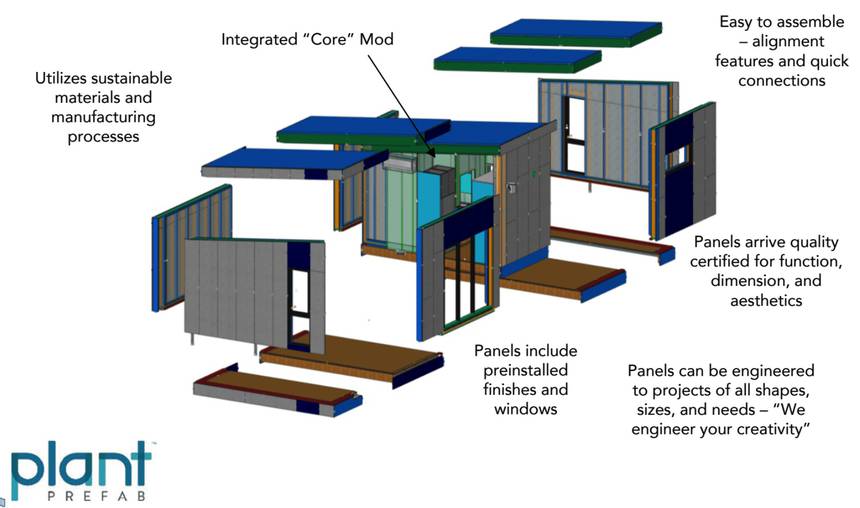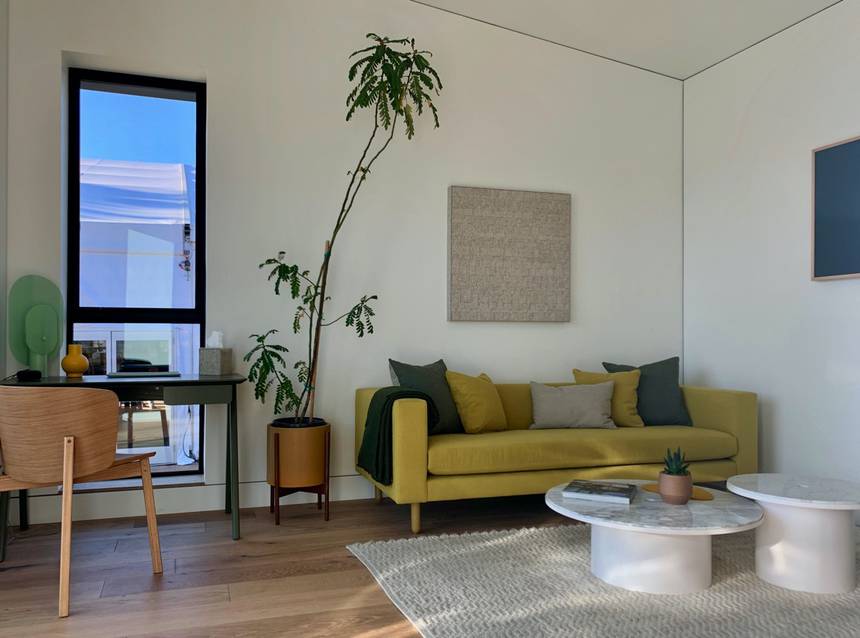Coming to a backyard near you:
article courtesy https://www.treehugger.com/
With aging baby boomers and young people who can’t afford housing, there’s going to be a huge market for these.
Now the latest in building tech and smart home tech merge in the LivingHome 10 from Plant Prefab, a 496 square foot Accessory Dwelling Unit (ADU) that’s “designed to provide affordable, sustainable rental units or family housing on existing single-family lots.”
ADUs were not very common or even legal in most places until recently, but the combination of aging baby boomers needing to downsize and young people who can’t afford housing has created a need and an opportunity.
The Plant Building System differs from traditional modular construction in that it is a mix of 2D panels and 3D core elements including the kitchen, bathroom, and mechanical services. This gives designers a lot more flexibility (modular homes are limited by road restrictions) and reduces the cost of shipping, and eliminates the need for a big expensive crane. It probably makes it easier to slip an ADU into a backyard.
© Sarah Rosenhaus Interior Design Photography
The Plant system also involves a lot more than just banging out modules and panels in a factory;
The engineering system is a modeling platform that creates detailed digital structural, mechanical, electrical, and plumbing renderings of the project to ensure design, structural, and manufacturing compliance before construction begins. The models are offered at a very high fidelity (down to every finish and fixture) and provide 3D plans, shop drawings, an executable bill of materials, and CNC data to expedite the actual building process to ensure expedited building and a better price point. All these engineering efficiencies enable much faster completion, less construction waste and cost, and higher quality at delivery
This is why you will never see me getting excited about on-site 3D printed buildings. There are all kinds of components and materials that go into buildings, and they all have to fit together properly. It’s complex and sophisticated and it’s the real future of construction. (See our tour or Bensonwood/ Unity Homes which works in a similar fashion)

I have often noted that I prefer dumb homes to smart homes, but a lot of these smart technologies are really useful for an aging population, many of whom might be living in these ADUs. Amazon (an investor in Plant Prefab) has been targeting the seniors market with the Echo and Alexa, with its VP telling CNBC that “we have looked at the older population in the context of health and we know this group has a lot of issues and unmet needs.” Seniors care companies are installing Alexa; a resident of a seniors home explains:
“Alexa is an absolute lifeline. I’d be bored stiff without her,” says Ruth Drahota, an 89-year-old resident who has been chatting with Alexa in assisted living for about a year. She did note that the experience was strange at first, but after getting the hang of it, she isn’t sure how should would live without it.
Smart thermostats, locks and security systems, and the Ring video doorbell can all be useful for an aging population. And as I have noted on MNN, “The trick is to make this stuff normal and to make it work for everyone, not specifically for the old.” There are many people (including my wife) who won’t allow this stuff in their house, but for the ADU crowd it will be very useful. As David Jackson, the director of Smart Home at Amazon says in the press release,”homeowners can rely on Alexa to help make daily household tasks more convenient, offer peace of mind while at home or away, and more.”
These LivingHome ADUs will not be cheap, (although they start at $154,000, which actually is) but as has been seen in cities that permit back lane housing, they are cheaper than a house or a condo in expensive cities. They are a way for people to provide housing for their kids now and do a switch later






